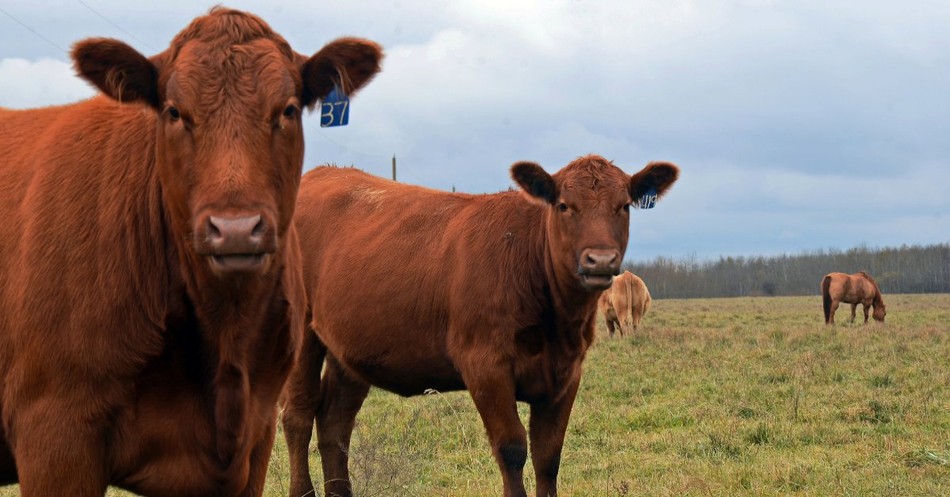As I stood amidst the ancient ruins of Shiloh, a site teeming with biblical resonance and historic sanctity, I couldn't help but reflect on the profound narrative that has unfolded across this sacred terrain. Shiloh, once the resting place of the Tabernacle and the Ark of the Covenant, served as a pivotal spiritual and administrative center in Israel for nearly four centuries. This land, steeped in divine presence and prophetic fulfillment, offers a unique window into the enduring covenant between God and His people.
Today, Shiloh is not just an archaeological curiosity; it is a living testament to the ongoing fulfillment of biblical prophecy. As articulated in the Book of Amos, God promised the restoration and perpetual security of His people in their land. This promise, etched into the landscape of Shiloh through the cultivation of vineyards and orchards, mirrors Israel's rebirth and speaks to the unwavering faithfulness of God. Amos 9:13-15 reads,
“Behold, the days are coming,” declares the Lord,
“when the plowman shall overtake the reaper
and the treader of grapes him who sows the seed;
the mountains shall drip sweet wine,
and all the hills shall flow with it.
I will restore the fortunes of my people Israel,
and they shall rebuild the ruined cities and inhabit them;
they shall plant vineyards and drink their wine,
and they shall make gardens and eat their fruit.
I will plant them on their land,
and they shall never again be uprooted
out of the land that I have given them,”
says the Lord your God.
These verses resonate deeply in Shiloh. Although a Jewish community was only established in 1979, agriculture flourishes, and the community thrives, embodying the scripture's prophecy.
Does ancient Shiloh help us understand the significance of red heifers?
Moreover, Shiloh's significance is augmented by its association with the red heifers, revered in Jewish tradition for their role in the purification rituals anticipated in the construction of the Third Temple. This element adds a profound layer to the site's historical and eschatological importance, bridging past traditions with future hopes.
Numbers 19:1-10 details the commandments God imparted to Moses and Aaron concerning red heifers, specifying that the Israelites were to provide a flawless red heifer that had never been yoked. Distinct from other sacrifices that were performed inside the camp, this one required the priest Eleazar to lead the heifer outside the camp for slaughter. Following this, Eleazar was to dab some of its blood with his finger and sprinkle it seven times toward the Tent of Meeting. The entire animal, dung included, was then to be burned within his sight, and additions of cedarwood, hyssop, and scarlet yarn were made to the fire.
The ashes from the red heifer were then collected by a ceremonially clean individual and these ashes were mixed with water. With these ashes, the process of cleansing involved mixing them with pure water and sprinkling the solution onto those unclean and entering the Temple. This is a perpetual statute, and some texts say an “eternal command,” for both Israelites and foreigners residing among them.
In theological discussions, especially among Christians anticipating the Second Coming of Christ, the red heifer holds profound eschatological significance. As early as A.D. 51, the Apostle Paul, in his letters to the Thessalonians, discussed expectations surrounding Christ’s return. For some believers, the appearance of a flawless red heifer aligns with prophetic signs indicating the end times.
Orthodox Jews, too, view the presence of such heifers as essential for rebuilding the Third Temple and reinstatement of ancient sacrificial rites. This shared anticipation underscores a deeply held belief in the red heifer’s role in both fulfilling prophecy and heralding a pivotal epoch in religious history.
What is the significance of the Third Temple?
The presence of the red heifers leads to discussions of the Third Temple, often enveloped in apprehension and controversy. The Temple symbolizes a broader theological vision—one of ultimate reconciliation and peace across faiths, as envisioned in Isaiah 2:2: "In the last days, the mountain of the Lord’s Temple will be established as chief among the mountains; it will be raised above the hills, and all the nations will stream to it." This prophecy foresees a gathering of all nations in worship and peace, transcending historical divisions and conflicts.
This scenario challenges us, the contemporary stewards of faith, to contemplate our roles in this unfolding divine narrative.
Furthermore, Psalm 86:9 underscores the inclusive scope of God's salvific plan: "All the nations you have made will come and worship before you, Lord; they will bring glory to your name." King David's words anticipate a time of universal acknowledgment of God's sovereignty, inviting each of us to partake in this grand, communal act of worship.
In light of these reflections, I encourage every believer to consider how they can contribute to this prophetic moment through prayer, support for Israel, and active participation in the global faith community. Let us embrace our part in this greater story of God, a narrative of redemption, restoration, and peace that unfolds daily in places as ancient and significant as Shiloh.
Is the Red Heifer prophecy misinformation?
The surge of misinformation about the red heifer and the resulting anxiety among some in the Muslim community underscores the possibility that the frenzy surrounding the red heifer might indeed be a component of the ultimate prophetic narrative. The argument is that if the red heifer sacrifice were not a genuine biblical prophecy and held no significance, it would not attract attention in the Muslim world. However, a simple translation of "red heifer" into Arabic (بقرة حمراء) followed by an internet search yields millions of results, highlighting the widespread interest and concern regarding this topic.
A recent article posted on IslamiCity [b] written by TRT World's Mohammad Al-Kassim stated, “Right-wing Israeli groups are planning to slaughter red heifers at Al Aqsa Mosque in the hope of fulfilling a Jewish prophecy. Some believe it's where the first and second ancient Jewish temples once stood.” TRT World is a Turkish public broadcaster.
“Slaughter red heifers at Al Aqsa Mosque” - - FALSE.
It’s not “heifers,” but just one cow. Additionally, the commandment in Numbers 19:3 clearly states that the cows “shall be taken outside the camp and slaughtered”. Putting the ceremony at the Al Aqsa Mosque on servers to inflame a tenuous relationship between Muslims and Jews, when in fact the statement is completely false.
“Some believe it's where the first and second ancient Jewish temples once stood.”
Some believe that attempts to shift from historical truth to fictional narratives aim to obscure the fact that Judaism predates Islam by thousands of years. Scholars established the origins of Islam in the 7th century, while the Second Jewish Temple was destroyed by the Romans six centuries earlier.
What does Hamas have to do with the Red Heifer prophecy?
Even the evil radical hate group Hamas is inserting itself into the story of these 5 cows. In a speech commemorating 100 days since the outbreak of Israel's conflict with Gaza, which began following the "Al-Aqsa Flood" assault by Palestinian militants from Gaza, Qassam Brigades spokesperson Abu Obeida commented on the significance of the red heifers. He described the anticipated sacrificial act as a "repugnant religious myth crafted to provoke the sentiments of an entire nation" and “...the bringing of red cows as an application of a detestable religious myth designed for aggression against the feelings of an entire nation in the heart of its Arab identity.”
This comes in a context where defending Al Aqsa is a crucial cause for Palestinian Muslims, encompassing both worshippers and militants. Yet, those in charge of this red heifer ceremony have no intention of destroying Al Aqsa Mosque.
Is Iran attached to this prophecy?
Then there’s Iran. The week I encountered the red heifers coincided with experiencing the stark realities many Israelis face daily during wartime—sirens wailing, explosions that shake the very ground, and an overwhelming sense of vulnerability about the immediate future. In those moments, I was acutely aware of how little control I had, trusting completely in God’s providence over where the bombs would land.
Thankfully, the attack from Iran was repelled, but the experience vividly brought to life the prophetic words of Zechariah 14: "2 For I will gather all the nations against Jerusalem to battle, and the city shall be taken and the houses plundered and the women raped. Half of the city shall go into exile, but the rest of the people shall not be cut off from the city.”
Taken literally, this scripture suggests that Jerusalem is destined to be the epicenter of a monumental final battle as foretold in both the Old and New Testaments, where the Third Temple will stand. Therefore, the red heifer, an enduring commandment, remains intricately woven into the divine narrative concerning God’s promised land, His chosen people, and His victorious Son, Yeshua.
It’s not the cows' fault.
Some critics suggest that the arrival of red heifers in Israel should not be viewed as a controversial issue. Rabbi Itshack Mamo, tasked with caring for these cows and leading the ceremony, emphasized in a recent discussion that his aim for the ceremony is to promote peace, not provoke conflict. He sees a future where the Temple is reconstructed on the Temple Mount in a way that circumvents destruction and discord.
Additionally, Byron Stinson of Boneh Israel pointed out during our interview, "This is just the beginning. The red heifer ceremony is the first step, followed by prayers on the Temple Mount that will welcome all nations, including Muslims."
This moment connects directly with the ancient narratives of our 2,000-year-old Bible. More than ever, it's essential to stand with our Jewish brothers and sisters who are committedly safeguarding the Holy Land, confronting challenges, and moving forward to create the ultimate house of prayer and worship—the Third Temple.
[a] https://www.christianity.com/wiki/end-times/red-heifers-end-times-are-coming.html
[b] https://www.islamicity.org/101413/jews-prepare-to-slaughter-red-heifers-at-al-aqsa-to-fulfill-prophecy/
Photo Credit: ©Getty Images/Pam Walker










